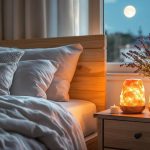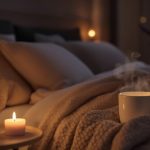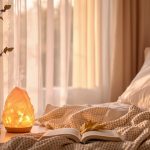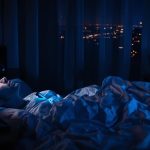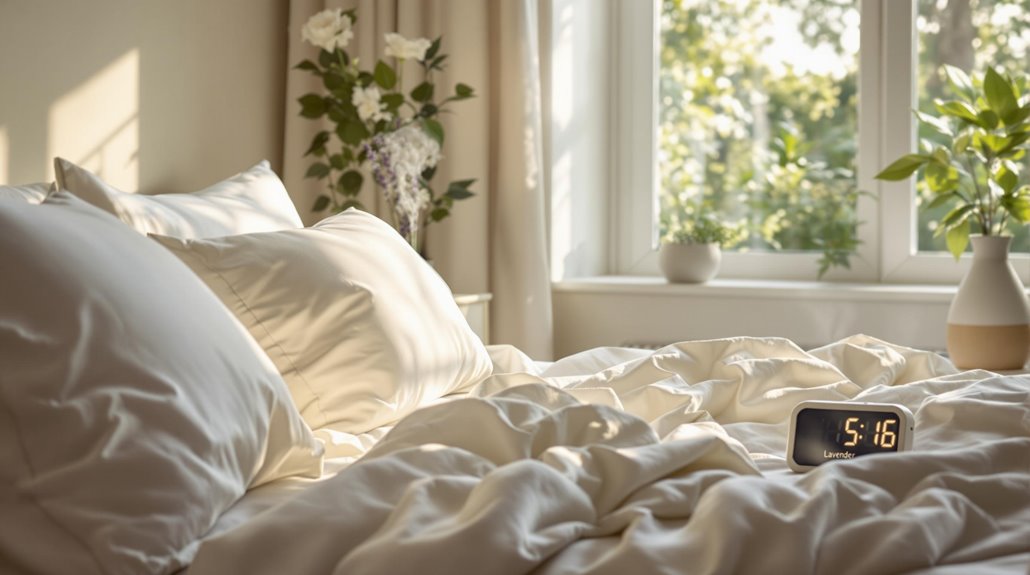
You’re missing out on peak wellness if you underestimate the power of good sleep hygiene. Consistent sleep patterns enhance cognitive function, boost your immune system, and reduce chronic disease risks. Creating a restful environment with minimal light and comfortable bedding makes dozing off easier. Avoid screen time before bed to prevent melatonin disruption. Regular exercise stabilizes your sleep-wake cycle and lifts mood, promoting better sleep quality. A calming bedtime routine prepares your mind and body for rest. It’s important to manage light exposure and choose pre-sleep activities that promote relaxation. There’s more to discover about achieving prime wellness through sleep.
Importance of Sleep Consistency
Sleep consistency is essential for maintaining both physical and mental health. Consistent sleep schedules improve sleep quality and duration, aiding in the regulation of circadian rhythms. When you commit to a steady sleep schedule, your body thrives. By stabilizing your sleep duration and reinforcing a balanced sleep architecture, your immune system gets the support it needs to fend off illnesses. Consistent quality sleep is crucial for emotional regulation and stress resilience, allowing you to handle daily challenges with more ease.
Furthermore, your metabolism aligns with the natural sleep-wake cycle, improving digestion and helping you stay energized. You’ll lower your risk of cardiometabolic diseases, safeguarding your heart against hypertension and reducing the chances of hardened arteries and diabetes. Imagine what a powerful statement that makes for your longevity—the chance to live longer and stronger, liberated from health anxieties.
Mentally, a consistent sleep schedule is your key to enhanced focus and cognitive sharpness. It’s as if your mind gets refreshed nightly, allowing you to regulate your mood and keep anxiety at bay.
Stress management becomes less of a struggle, paving the way for stability and overall well-being. This clarity boosts your performance, whether in work, study, or play. With better decision-making and heightened productivity, you’re not just keeping up with life; you’re setting the pace.
Designing a Restful Sleep Space
Achieving consistent sleep is just one piece of the puzzle; creating an environment that nurtures restful sleep is equally important. To design a tranquil bedroom layout, begin by managing light exposure. Install blackout curtains to keep the room dark and remind yourself to turn off electronics or switch to nighttime settings. A peaceful sanctuary demands a bedroom layout that minimizes unnecessary light and embraces the soothing embrace of darkness. Keep the decor choices simple but significant. Select calming colors and scents like lavender to weave tranquility into your sleep space. Declutter regularly to reduce anxiety and stress, and opt for furniture that isn’t cumbersome. Comfort determines quality, so invest in a cozy mattress, pillows, and breathable sheets made from natural fibers like cotton or silk. Remember, light management is crucial as it affects melatonin production, impacting your ability to fall asleep easily. Room temperature is pivotal for liberation from restless nights. Experiment to find a setting between 60 and 67 degrees Fahrenheit that encourages your natural cooldown. Hydration guidelines can also play a role in supporting adequate rest by ensuring your body functions optimally. Noise can be silenced with earplugs, sound machines, or strategically positioning your bed away from disturbances. Embrace these sound and space solutions to create your personal oasis of relaxation, ensuring you’re set for nights of deep, undisturbed sleep.
Avoiding Sleep-Disrupting Substances
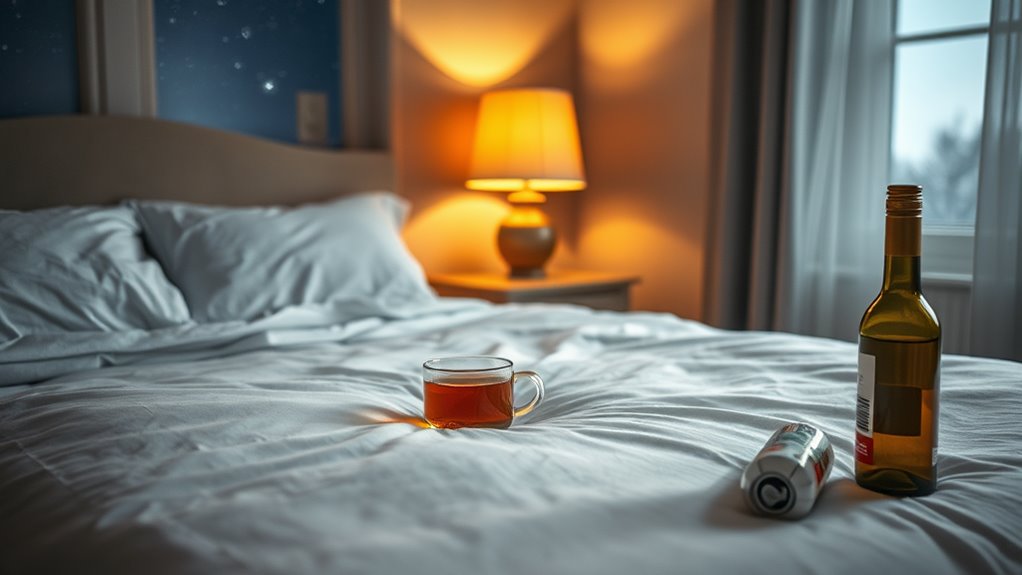
When it comes to ensuring a good night’s sleep, avoiding substances that can disrupt your rest is essential. Understanding medication awareness and practicing substance moderation can liberate you from a cycle of disrupted sleep. Many prescription medications, such as benzodiazepines and certain antidepressants, may offer short-term relief but can impair cognitive function and motor skills long-term. Letting go of dependency on such meds can free your nights of disturbances like a ‘benzodiazepine hangover’ or sedative-induced restlessness. Similarly, while over-the-counter options like antihistamines might seem benign, they can cause more harm than good. Diphenhydramine, for example, can lead to symptoms like hallucinations when overused. Moderating your intake of substances like pseudoephedrine and caffeine-infused meds can counter insomnia and prevent unwanted jitters. Beyond prescribed and over-the-counter drugs, recreational substances also wreak havoc on your sleep. Alcohol, marijuana, and nicotine disrupt the delicate balance of sleep stages, leaving you tossing and turning. Good sleep hygiene practices, such as limiting screen time before bed, can enhance sleep efficiency by creating a conducive environment for rest. Liberation is possible through awareness and moderation. Stepping away from these and recognizing the deep impact of substance withdrawal empowers you to reclaim restful, fulfilling sleep. Embrace the freedom that comes from informed choices and a clearer mind.
Developing a Soothing Night Routine
To create a soothing night routine, start by engaging in calming pre-sleep activities like writing down your thoughts or enjoying herbal tea.
Incorporate mindfulness and relaxation techniques such as deep breathing exercises or meditation to ease your mind.
Avoid screens and instead focus on creating a tranquil environment to signal your body it’s time to wind down.
Consider using white noise technology to mask background sounds and enhance your sleep environment.
Calming Pre-Sleep Activities
Crafting a soothing night routine is essential for enhancing sleep quality and overall well-being. Integrating calming pre-sleep activities into your evenings doesn’t just prepare you for restful sleep; it transforms your night into a liberating escape from the day’s chaos. As you step into this personal sanctuary, let soothing scents and gentle movements guide you. Try incorporating aromatherapy with calming fragrances like lavender and cedarwood—perhaps via a diffuser or a bath. Engage in gentle movements through restorative yoga or simple stretches like legs up the wall and butterfly pose to ease your body into relaxation.
| Activity | Benefit |
|---|---|
| Aromatherapy | Promotes restful sleep |
| Gentle yoga or stretch | Releases physical tension |
| Restful music | Reduces anxiety and cortisol |
Lighting plays a vital role too—dimming lights or using amber bulbs can signal your body it’s time to wind down. Unplug from electronic devices to shield yourself from sleep-disrupting blue light. Embrace calming hobbies such as reading a physical book or completing a puzzle, which lift your spirits without overwhelming stimulation. As bedtime approaches, savor a warm, caffeine-free beverage to complete your serene evening, allowing tranquility to guide you effortlessly into sleep.
Mindfulness and Relaxation Techniques
Establishing mindfulness and relaxation techniques in your nightly routine can directly enhance your sleep quality. Imagine letting go of the day’s chaos, embracing tranquility by practicing mindfulness meditation. Focus on your breathing and keep present-moment awareness. This approach can help reduce stress-related sleep disorders by evoking a relaxation response—a rejuvenating opposite to stress.
Try dedicating just 20 minutes daily to building this relaxation reflex. Combine it with other sleep hygiene strategies to fend off insomnia.
Incorporate relaxation exercises like diaphragmatic breathing. Use your diaphragm for calm, controlled breaths, creating serenity from within.
Progressive muscle relaxation is another technique, gently guiding muscle tension away as you relax from toes to forehead. Visualization exercises let you craft mental images of well-being and peace, easing stress away.
Yoga nidra offers meditative refuge, placing you in a sleep-like state through imagery and breath. Tread softly into non-sleep deep rest, allowing your conscious mind to glide into calming waters without falling asleep.
Exercise’s Influence on Sleep Quality
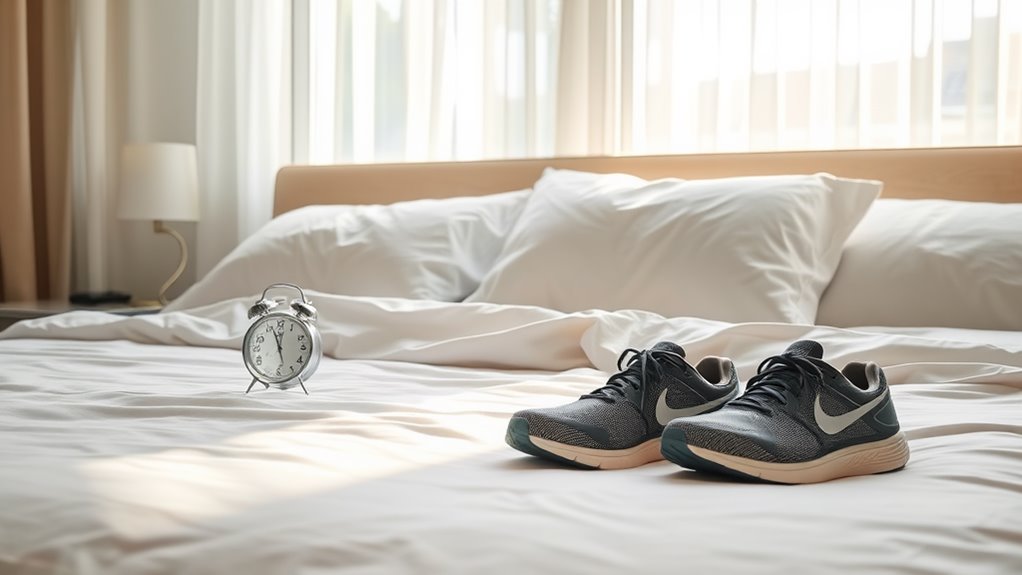
When you incorporate regular exercise into your daily routine, it greatly enhances your sleep quality. Imagine breaking free from restless nights and the fatigue that drags you down. The exercise benefits are profound: from reducing cortisol, the pesky stress hormone, to releasing endorphins that combat anxiety and cultivate relaxation. High-intensity workouts or simple brisk walks can be your ticket to tranquility. Drill down your workout timing for best results—mornings or early evenings align well with your circadian rhythm, paving the way to rejuvenating rest. Dive into the rhythm of consistent physical activity, and you’ll find your sleep-wake cycle stabilizing. Your body will naturally gravitate towards regular sleep and wake times, a liberating routine that fosters freedom from sleep struggles. Regular activity increases sleep efficiency and harnesses your homeostatic sleep drive, ensuring you fall asleep more readily and experience less restless tossing. Vigorous exercise can push you into the coveted deep sleep phase, diminishing light sleep’s hold on you. Regular aerobic sessions can also mitigate the symptoms of disruptive sleep disorders like apnea and cut down on the need for sleep aids, letting you reclaim restful nights naturally. Regular exercise enhances mood and well-being, adding to its positive influence on sleep quality.
Light Management for Better Sleep
To enhance your sleep, it’s essential to manage light exposure effectively.
Make certain you get plenty of natural sunlight during the day to help regulate your circadian rhythm, while minimizing blue light from screens and artificial sources in the evening.
At night, reduce overall brightness to create a calming environment that promotes restful sleep.
Limiting Evening Blue Light
Blue light is an essential factor to take into account when aiming to improve sleep quality.
It’s time to break free from those chains of restless nights and embrace effective strategies to enjoy better rest. Increased screen time in the evening exposes you to blue light, the culprit behind suppressed melatonin and disrupted circadian rhythms. This kind of light exposure confuses your brain into believing it’s still daylight, keeping you alert when you should be winding down.
To regain control over your sleep, consider reducing your evening interaction with electronic devices like smartphones, computers, and TVs. Simply turning them off 2-3 hours prior to bedtime can greatly diminish your exposure.
If going offline seems too steep a price, try using blue light-blocking glasses or apps that filter blue light emissions from screens. These small changes can lead to a huge difference in your nights, as they promote better alignment with natural sleep cycles.
Unshackle yourself from the grips of sleeplessness by prioritizing how you light up your evenings.
Make thoughtful choices about your light exposure, reclaim your nights, and revolutionize your health and wellness journey.
Maximizing Daytime Sunlight
While reducing blue light exposure in the evening is important for restful sleep, embracing natural daylight during the day can further enhance your sleep quality. By exposing yourself to sunlight soon after waking, you’re fine-tuning your circadian rhythms, which align your internal clock with day and night cycles. Morning light suppresses melatonin production, helping you feel more awake and ready to seize the day.
Even on cloudy mornings, exposure to natural light has significant benefits, kickstarting your body’s alertness and reducing stress.
Don’t underestimate midday sunlight either. It continues to adjust your circadian rhythms, promoting a well-synchronized sleep-wake cycle. Just 30 minutes outdoors in the middle of the day can make a world of difference, especially during those gloomy winter months.
By stepping outside and soaking up natural light, your body learns when it’s time to be alert and when it’s time to retreat into soothing slumber later.
In practice, fit sunlight exposure into your daily routine by enjoying your coffee or lunch outside. Take a walk without those dark sunglasses and let light in. This simple yet impactful change can liberate you from restless nights, ushering in peak wellness.
Reducing Nighttime Brightness
Managing the brightness in your environment as evening approaches is essential for improving sleep quality. Your nighttime habits, especially light exposure, can either liberate you into restful sleep or trap you in wakefulness. The bright lights, especially two hours before bedtime, disrupt your circadian rhythm and delay melatonin production.
To shift smoothly into sleep, consider reducing your light exposure effectively. Embrace freedom from restless nights by making informed choices.
- Avoid electronic devices before bed and switch them off at least an hour before sleep.
- Install blue light-filtering apps or use night mode settings on your devices.
- Replace fluorescent or LED bulbs with incandescent or warm-light spectrum bulbs.
- Keep your sleeping area dark by using blackout curtains or an eye mask.
Unmanaged nighttime light exposure links to insomnia, eye discomfort, and potential weight gain. It can even increase risks of certain health issues.
Benefits of Daytime Physical Activity

There’s a compelling allure to the benefits of engaging in physical activity during the day, as it greatly enhances both your physical and mental well-being.
Exercise benefits extend beyond mere physical strength; they’re a gateway to liberation. Imagine reducing your risk of heart disease, type 2 diabetes, or even certain cancers like breast and lung. Physical activity strengthens your bones and muscles, lowers your blood pressure, and keeps your cholesterol levels in check. It’s a step towards not just surviving, but thriving.
Mentally, the rewards are just as enticing. After a good workout, anxiety takes a backseat, leaving you with a lighter mood and a sharper mind. Over time, you’re less likely to face the shadows of depression and anxiety. Your energy levels soar, fatigue fades away, and your sleep quality improves, freeing you from tossing and turning at night.
But it doesn’t stop there. With more activity, your daily functions improve—climbing stairs, carrying groceries, even just cleaning seems less of a chore.
Productivity at work skyrockets, and sick days might become rare. In the long run, you’ll find yourself not only living longer but living well. Exercise benefits have never felt so freeing.
Tech-Free Time Before Bed
Dimming the glow of screens before bed leads to a more restful night’s sleep. Embracing a digital detox at this time can transform your nighttime routine into a sanctuary of peace.
Engaging with technology right before sleep can delay your sleep time, mess with your melatonin production, and keep your brain buzzing. Instead, weaving calming bedtime rituals into your routine can help you drift off with ease.
Consider these liberating alternatives to technology:
- Reading a physical book: Immerse yourself in the pages of a novel and let your imagination wander without the harsh blue light.
- Meditation and relaxation techniques: Find inner peace through deep breathing exercises or mindfulness meditation, easing your mind for sleep.
- Taking a walk: A gentle stroll not only benefits your body but also preps your mind for rest.
- Journaling: Empty your thoughts onto paper, freeing your mind from the day’s clutter.
To make your sleep space tech-free, set consistent “screens off” and “lights out” times. Replace your phone with an alarm clock and inform others about your new boundaries.
You’ll soon discover that the freedom of a tech-free bedroom enhances sleep quality, enriching every aspect of your life.


